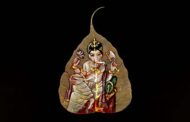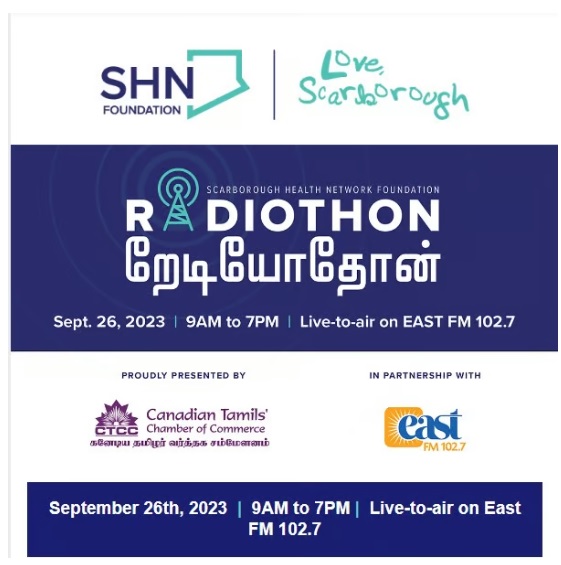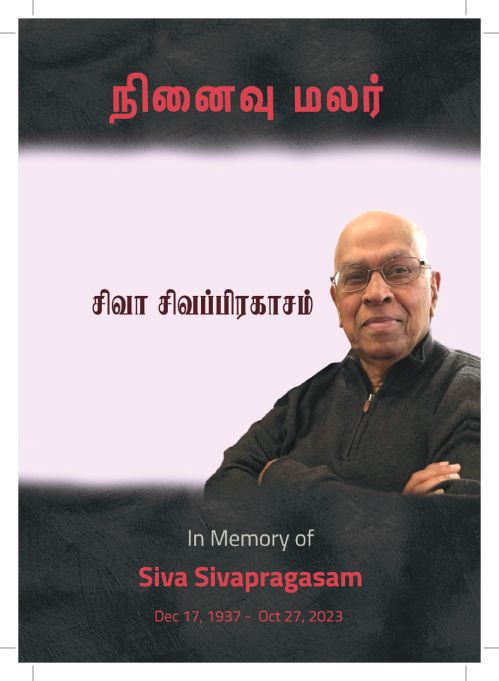Compiled by KIDAMBI RAJ
Historical background of the spread of Hinduism in VIETNAM
Vietnam is widely known for its tolerance towards religion. Hinduismhas impacted the world in the sense that it has risen to become one the top three religions in the world today. About 14% of the world’s population claims Hinduism as their religion. The Hinduism faith is considered to be one of the most religiously tolerant religions in the world. Our culture is worth preserving and as Hindus, we know that dharma is not optional. Dharmic based Hindu Civilization, wherever found, is a testament to that which is best in humanity.As the 21st century draws, the Hindus of Bali, Vietnam and the world look to India as both the epicentre and foundation of Hinduism.
Chams that adhered to Hinduism were referred to as Balamon Chams. The term Balamon stems from the Hindu term Brahma, which they believed is the major metaphysical force that united all of life in existence. Stemming from the Hindu beliefs, the Chams (like their Khmer neighbours) began to excel in religiously themed carvings and artwork. Some of the major symbols of Saiva Hindu religion can be found in the relics of champa, like, Linga: A dark pillar made of stone, crafted to worship Lord Siva; Mukhalinga: A linga with the carved image of Lord Siva as a human being, or a Linga with a carved face supposedly belonging to Siva;
A linga with a stylized interpretation of Siva’s trademark hairstyle; Segmented Liga: A totem pillar with three different sections of carvings to represent three gods of the Hindu faith; Brahma, Vishnu and Siva; Kosa: A woven basket of precious metals created to be placed atop the linga. These elements were extremely important to the Champa Kings, and many would build them, naming the relics after themselves. While a great number of these relics have not survived into the present day, the best modern collection exists at the Cham Museum in Danang, Vietnam.
While today the Cham are Vietnam’s only surviving Hindus, the nation once harbored some of the world’s most exquisite and vibrant Hindu cultures. The entire region of Southeast Asia, in fact, was home to numerous Hindu kingdoms. Champa was a formidable Hindu Kingdom, renowned for its immense wealth and sophisticated culture. Its major port was Cattigara. Modern scholarship has confirmed Cattigara as the forerunner of Saigon (modern day Ho Chi Minh City). Cattigara was, in fact, the main port at the mouth of the Mekong River, a name derived from Mae Nam Khong, the Mother Water Ganga. In one of Mr. S. Swaminathan’s, blog called Ancient Sanskrit Inscriptions in Strange places, he wrote, The first Cham King that history knows is Sri Maran, identified as a Tamil ruler. The fact that a Pandyan kings by these names are spoken of in inscriptions and Tamil Sangam literature. The oldest Sanskrit inscription discovered in Vietnam mentions the name of Sri Maran. The inscription is known as the Vo-Canch inscription. Another early Champa King was Bhadravarman, who ruled from 349-361CE. His capital was the citadel of Simhapura or Lion City, now called Tra Kieu. Bhadravarman built a number of temples, conquered his rivals, ruled well and in his final years abdicated his throne and spent his last days in India on the banks of Ganges River. Historic Champs was divided into five regions: Indrapura (present day Dong Duong) served as religious centre of the Kingdom; Amaravati is the present day Quong Nam province; Vijaya is now Cha Ban; Kauthara is the modern Nha Trang and Panduranga is known today simply as Phan. Panduranga was the last Cham territory to be conquered by the Sino-Vietnamese.
Many Hindu artifacts of significant historical value have been found in Vietnam. In 2001, 320 gold plaques were discovered, decorated with various Hindu divinities, such as Garuda, Narasimha, Kuram and Durga. These plaques have been identified as the earliest known Hindu iconographic images ever discovered in Southeast Asia.
The majority of Cham in Vietnam (also known as the Eastern Cham) are Hindus while their Cambodian counterparts are largely Muslims. Hindu Chams are called Balamon Cham or Balamon Hindus. They practice a form of Shivite Brahminism. Most of the Cham Hindus belong to the Kshatriya caste, but a considerable minority are Brahmins.Balamon Cham is one of two surviving non-Indic indigenous Hindu peoples. There are three Indian Hindu temples in Saigon (Ho Chi Minh City)Mariamman Temple, Đền Subramaniam Swamy temple andThendayuthapani temple.The Mariamman Temple is their focal point. It is also considered sacred by many native Vietnamese and Chinese. It is also believed to have miraculous powers and is dedicated to the Hindu goddess Mariamman.
Temple built by South Indian Chettiar diaspora
The Chettiars are a mercantile community of Indian origin who traditionally are bankers and money lenders, and considered to be the real pioneers of modern day net banking. In the mid 19th century, a large group of Chettiars travelled and traded widely in South East Asia, looking for new opportunities, which brought them to set up a base in Saigon. Vietnam’s sea line was luring and their trading enterprises flourished here, with many Chettiar even having their own ships. Their home turf lies in a place called Chettinad in the Province of Tamil Nadu in South India. They are a very close knit conservative community and devote a considerable amount of their time to religious activities. They follow a strict code of business ethics, and assure people of a good turn on their investment. This flourishing community worshipped the Goddess of rain, and built the Mariamman Temple in the heart of Saigon in late 19th century, in the same area that they owned shops and warehouses for large scale trading of goods such as rice and salt.
In a legend posted inside the temple walls, Goddess Mariamman is also worshipped as the healer of disease such as smallpox. The story tells of a beautiful woman called Nagavalli, who was the wife of one of the nine Rishis. Nagavalli was famed for her beauty, and one day when the rishi was not at home, the three-headed God, Trimurti visited her, but Nagavalli ignored Him and turned Him out of her house. Trimurti was so angry that He cursed her by disfiguring her beautiful face. Nagavalli became ugly with many pock marks on her face and body. When the rishi returned home, he was shocked to find a disfigured wife and hating her looks, he threw her out of the house saying that she would surely be born as a demon in her next life and spread the disease among people. Nagavalli left the house, and to survive she begged door to door for food, while fanning her body with margosa leaves to ward off the flies. Soon she was completely healed, and people from then on began to worship her as Goddess Mari, meaning changed and having the miraculous powers of healing disease and in particular, fertility in women.
In mid-July to mid-August, the Aadi Monsoon festival is held throughout Tamil Nadu, devoted entirely to Goddess Mariamman. This is a unique festival dedicated to all the perennial rivers and major lakes and the many water sources to celebrate the rising of the water levels in the monsoon season. This water ritual has been in practice since ancient times when it was patronized by kings and royal households.
THREE Important and OLD HINDU TEMPLES IN SAIGON
1. MARIAMMAN TEMPLE
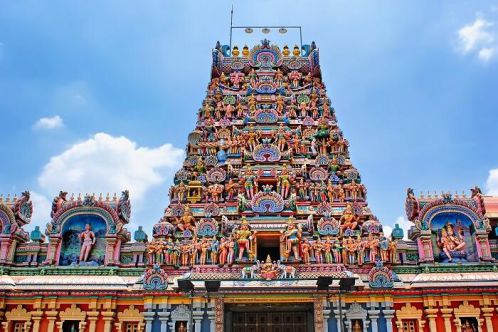
Hindu temple still in active use in Ho Chi Minh City (Saigon) is a little piece of Southern India in the centre of Saigon. Though there are only 50 to 60 Hindus in Saigon and all of them Tamils, this temple is known in Vietnamese as Chua Ba Mariamman, is considered sacred by many ethnic Vietnamese and ethnic Chinese. Also, it is reputed to have miraculous powers. This temple was built at the end of the 19th century and dedicated to the Hindu Goddess Mariamman, another aspect of Goddess Parvathy. As the mother of the universe, Parvathy is Amma(mother) and prayed as Amman. Utsava Amman is placed next to the main deity. During the festivals, she is placed on the Simha Vahana and taken on procession along the roads of Ho Chi Minh City. Favourite offerings placed nearby often are Joss Sticks, Jasmine, Lilies and Gladiolis. The wooden stairs on the left as you enter the building, lead to the roof, where you will find two colourful towers covered with innumerable figures of Lions, Goddesses and Guardians. In addition, at the outer hall, Goddess Amman’s (Parvathy’s) sons Ganesha and Muruga are on Her right and left respectively. The Rajagopuram of this temple is about 12 metres high with a number of statues. Colorful statues of Amman, Lakshmi, Ganesha, Muruga, Angels and dancing girls all decorate the entrance to the inner hall. The attractive features of this temple are the beautifully sculptured Amman in Her different forms as well as other deities. They include, Nataraja, Paramasiva, Brahma, Mahavishnu, Kaliamman, Viramahaskthi, Chamundi, Thirumagal, Maheswari, Meenakshi, Valambigai, andal, Kamakshiamman, Karumari Amman, Sivagami and Parvathy with Murugan in Her lap. Devotees experienced the power of Mariamman for a number of years. Hence, this temple is most popular with the locals. This temple is now taking the necessary steps to bring a priest from India to conduct proper Puja in a regular basis. This is one of the famous Hindu temples in Vietnam and it was built in the 19th century by the Tamil merchants (Chettiars) who came here for the purpose of trades.
- DEN SUBRAMANIAM SWAMY TEMPLE

This place is located in Ho Chi Minh City at the heart of Saigon and was built by Indian merchants in the 19th century. The temple is famous for its Navagrahaswith each one dressed in colored silk robes. You will get to see the pictures of Lord Shiva, Krishna, Goddess Lakshmi and other deities of Hindu religion. This very place has been neglected for years but now it is considered one of the most beautiful temples in Vietnam.
The main deity is Lord Muruga with Valli and Deivayaani on His right and left sides respectively. Lord Ganesha is located on the right side of Muruga. Rahu and Kethu are at the right and left sides of Lord Ganesha. Mouse is placed in front of Lord Ganesha. On the left side of Lord Muruga, Lord Venkateswara with Goddess Lakshmi and Aandal on His sides can be seen.The Vasantha Mandapam for Utsava Murthis is located at the right side of the entrance. Just outside the Garbhagraha, a well dressed guardian Idumpan (the first person to perform Kavadi to Lord Muruga) shrine is located. Near the temple entrance, a picture of Bala Krishna is housed in a specially made colourful Gopuram structure. A red painted Horse Vahanam can be seen in the main hall of the temple.
- THENDAY YUTTHA PANIN TEMPLE
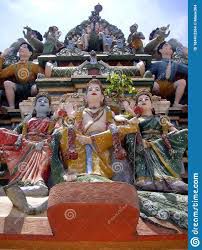
This is a very simple Hindu temple in Vietnam and it’s really popular with the local people. Here you will find pictures of several gods and while you are visiting this place make sure to climb the rooftop to get the view of the whole city. This temple is a must be a first in your list when you are visiting Hindu temples in this country. Inside the temple, the regulations of the temple, both in Vietnamese and English are displayed. The writings in English are as follows:
1.The Thenday Yuttha Panin Temple worshipping Hindus areadvised to comply with the religious belief.
2.Opening hours from 6 am to 7 pm specially on the first and 15th day of Lunar Calendar and on Hindu festive days are extended until 8 pm.
3.Personnel of this Temple are not authorised to receive any money offered by the visitors or to accept any tips (Please drop your offerings in the charity box).
4. Everybody is requested to protect the Temple property located in shrine and in the environment.
5. Please observe order, keep silence, make no noise that will interfere with worship and others.
6. Please do not enter the Almighty shrine through the inner sanctum.
OTHER HINDU TEMPLES IN VIETNAM
Besides the above mentioned three main temples, there seems to have been several other Hindu temples and most of them have been either fully or partially destroyed by the later kings. Still, most of the relics of the several temple structures are maintained as tourist attractions, because of the intricate workmanship of those structures. Short write-ups of some of those other Hindu Temples are given below.
- Po Cham Nagar Tower
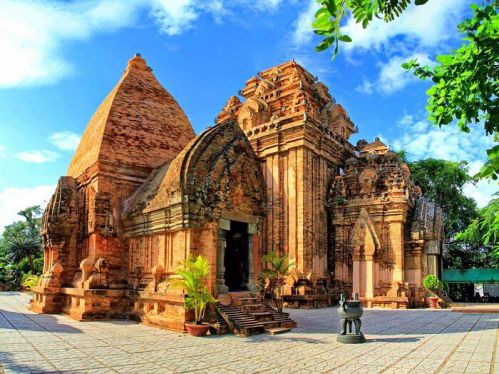
This is the sacred worship site from 2nd century AD, and it was constructed by the Cham King Satyavarman in 784 AD. This is one of the ancient Hindu temples in Vietnam and is dedicated to the goddess Yan Po Nagar, who is supposed to be the mother of the country. From 25 meters from here is another temple where the goddess is worshipped and it is believed that women with a child are blessed here. There are other towers too, dedicated to Lord Shiva, Lord Ganesha and so on. The traditional festival in Vietnam is Thap Ba and in this time the gods and goddesses are worshipped here.
5. My Son Sanctuary – UNESCO WORLD HERITAGE CENTRE
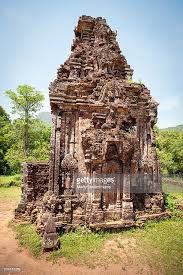

In 1999, over a century after the French rediscovered My Son, UNESCO honoured the mystical Hindu Grounds as a World Heritage Site. Modern technology hasn’t been able to recreate the extraordinary Cham brick building methods. Unlike the ancient bricks, the replacements aren’t seamless and have already begun to crumble. My Son is a holy place full of secrets that may never be known. This is mainly a cluster of ruined ancient Hindu Temples in Hanoi, Vietnam. Among the ruins, My Son is the most popular one and it was constructed in 4th to 14th century AD, and these temples are dedicated to Lord Siva and other Hindu Gods as well. Cham began to build the My Son complex in honour of Lord Siva, a principal Hindu deity. Siva is the creator, destroyer and preserver and their protector. The Hindu temple complex is framed by its namesake mountains. My means beautiful and Son means mountain (pronounced Me Sun). The Cham people were indeed inspired by nature as they constructed the temple grounds by precisely placing monuments strategically in a two-kilometer wide semi-circle in accordance to where the Sun would shine, starting behind the head of Lord Vishnu in the early morning. Before entering the temples, Hindu monks would cleanse their hands and feet with water that flowed over the Linga and Yoni. Cham Kings were not allowed to enter the Hindu temple as they come. They would have to sit for three days in the waiting rooms at My Son and practice deep meditation while the Hindu monks prayed for the Champa Kingdom from within the temple.
6. Po Shainu Cham Towers, Mui Ne
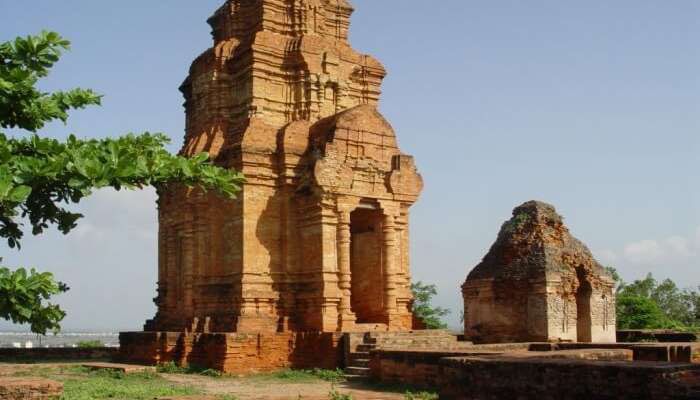
This temple is located near the Phan Thiet City and these towers were built in honour of Lord Siva. The main tower has the height of 15 metres and has many lingams and other towers are between 5 and 12 metres. Each year the Cham people visit this which is one of the oldest Hindu temples in Vietnam, and they offer their prayers and religious festivals are held at the time as well. One of the festivals is for rain, damp building festival, rijanuga and then the abstinence ceremony where the fisherman pray for the safe journey in the sea.
7. Po Shanu Cham Towers
The Po Shanu Cham Towers are located atop Ong Hoang (Mr Heaven) Hill, comprising three ancient worship towers built during the late 8th century. Together with Po Dam Towers and My Son Sanctuary, these ruins are regarded as important cultural landmarks of the ancient Champa Kingdom. Located 7 kilometers northeast of Phan Thiet City, the Po Shanu Towers were built to honour Hindu deities, Lord Siva, Agni and Nandi. Every year, the ethnic Cham community visits the ruins for religious festivals, such prayer for Rain, Rija Nuga, Damp Building Festival, and Abstinense Ceremony while local fishermen pray for safe journeys before they head out to sea every morning.
https://www.facebook.com/monsoonjournal/posts/3896192727067561







